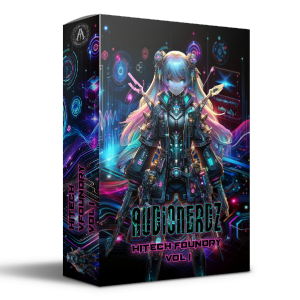Psytrance: The Evolution of an Underground Culture and Its Battle for Identity
Psytrance is one of the most misunderstood and yet deeply influential electronic music genres to ever emerge from the underground. What began as an experimental, spiritually driven soundscape in Goa has morphed into a global phenomenon—one that spans continents, genres, and ideologies. Its story is one of rebellion, transformation, commercialization, and self-reflection.
If you’re looking for a simple guide to psytrance—an easy entry into its beats and melodies—you might be disappointed. This isn’t a typical genre breakdown; this is about the struggles and triumphs of a movement that lives in the margins, refuses to be easily defined, and yet has infiltrated mainstream culture in ways that few could have predicted.
It’s a scene that’s constantly at odds with itself, trying to hold onto its roots while navigating the overwhelming growth of its global reach. This is the story of psytrance, the genre that defined a generation—and the question of whether it can reclaim its soul in a world that’s often more interested in trends than transcendence.
The Early Days: Goa’s Underdogs and the Birth of a Sound
To understand psytrance, we have to go back to its origins—the beaches of Goa, India, in the early ’90s. But calling Goa “the birthplace” of psytrance is too simplistic; the genre’s evolution is the product of a collision between cultures, ideas, and ideals.
Goa, in the early ’90s, was a place of pilgrimage for travelers, spiritual seekers, and those looking for something outside the consumer-driven world of the West. It was a place where people sought freedom, enlightenment, and the experience of the unknown. For those arriving on the beaches of Anjuna, the music wasn’t just background noise—it was the soundtrack to a journey, a call to something larger than the self.
Artists like Goa Gil, Astral Projection, and Juno Reactor began blending electronic dance music with elements of Indian classical music, psychedelic rock, and spiritual rituals. It was a fusion of genres that transcended music itself. It became about the vibe—the sense of unity, the connection with something greater, and a feeling that couldn’t be put into words. Goa trance was less a genre and more a cultural movement, a form of expression in its purest sense. It was the idealism of the ’60s re-imagined through the synthesizers of the ’90s.
But it wasn’t long before this underground movement attracted the attention of outsiders. As the crowd grew, so did the complexities of the scene. Goa wasn’t a utopia; it was a melting pot where creativity collided with commercialism, and the line between spiritual rebellion and corporate interests became increasingly blurry.
The Globalization: Psytrance Goes Mainstream
By the mid-2000s, psytrance was no longer confined to the shores of Goa. It had become a global movement, with festivals springing up all over the world. As psytrance became more accessible, it also began to splinter into subgenres, each vying for its slice of the sonic pie. The genre found its way to Europe, Brazil, Israel, and later North America, becoming the soundtrack for festivals that attracted thousands of people seeking an escape from the monotony of everyday life.
The festivals became the spiritual home for the community—places like Boom Festival in Portugal, Ozora Festival in Hungary, Universo Paralello in Brazil, and Rainbow Serpent in Australia. These events are not just about the music; they are about the culture, the shared experience, and the collective energy that pulses through the air. Yet, with the increasing size and visibility of these festivals came inevitable commercialization. Sponsors, ticket prices, VIP sections—things that felt out of place in the early days—slowly started to creep in. Festivals that once felt like sacred spaces began to feel like corporations. But even in this shift, the scene’s core—the pulse that made psytrance what it is—never quite disappeared.
Subgenres and the Struggle for Authenticity
One of the most defining and contentious aspects of psytrance is its overwhelming number of subgenres. There’s Full-On, Dark Psy, Progressive Psy, Forest, Hi-Tech, Suomi, and many more. Some of these subgenres remain true to the experimental spirit of the genre, while others have become more formulaic, focused more on pandering to the masses than pushing boundaries.
The rise of subgenres in psytrance is a double-edged sword. On the one hand, they allow artists to explore different sonic territories, enabling the genre to stay fresh and dynamic. On the other hand, they risk fragmenting the scene—creating pockets of purism where certain styles are considered “real” psytrance, and others are dismissed as diluted or commercialized. This has led to a sense of gatekeeping, with some festival lineups and labels favoring established names and styles while leaving less mainstream artists struggling for visibility.
There’s a fine line between staying true to the genre’s roots and evolving it into something new. Psytrance’s obsession with labels has sometimes limited its potential to innovate, with each subgenre becoming its own echo chamber. Psytrance today, while still home to boundary-pushing producers, has found itself increasingly defined by repetition and a certain formulaic approach, particularly in the commercial sectors. This staleness has led many to ask whether the genre has plateaued or if it can break free of the cycle.
Commercialization: From Culture to Industry
The shift from countercultural movement to industry staple is perhaps the most significant change psytrance has faced in its evolution. While the genre still carries the weight of its underground roots, it now faces the pressures of market-driven forces. Major labels, commercial festivals, and the growing influence of social media have made psytrance more accessible than ever—but they’ve also made it more commercialized. The same labels that once championed the genre are now profiting from it, sometimes to the point where the music itself feels secondary to the business side of things.
This commercialization has led to a growing tension between the genre’s ideals and its current state. Festivals that once existed as spiritual havens have turned into massive, for-profit events. Labels that once celebrated underground artists now cater to the mainstream tastes of festival-goers. And while there are still plenty of pioneering artists pushing boundaries and creating new sounds, they often find themselves at odds with the market forces that demand a certain level of “brandability.”
The Future: Will Psytrance Find Its Soul Again?
The question facing psytrance today is whether it can reclaim its identity without abandoning the global audience it’s built. Can the genre evolve without losing the raw, experimental spirit that made it so revolutionary in the first place? Can it maintain its spiritual, countercultural roots while simultaneously participating in the commercial world?
The answer lies in the balance. The genre needs to continue evolving, but it must do so in a way that honors the underground culture from which it emerged. The commercialization of psytrance doesn’t have to mean the death of its soul, but it requires a conscious effort to keep the integrity of the music intact. As long as there are artists pushing boundaries, festivals that celebrate true community, and listeners who crave more than just a beat to dance to, psytrance will always have the potential to evolve—and to remind us of what it once was: a movement, a revolution, and an experience.





